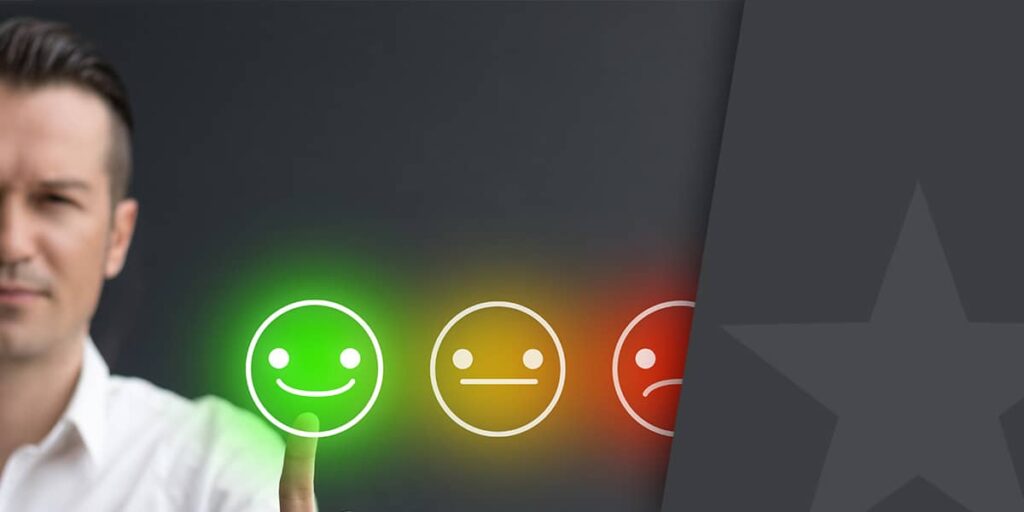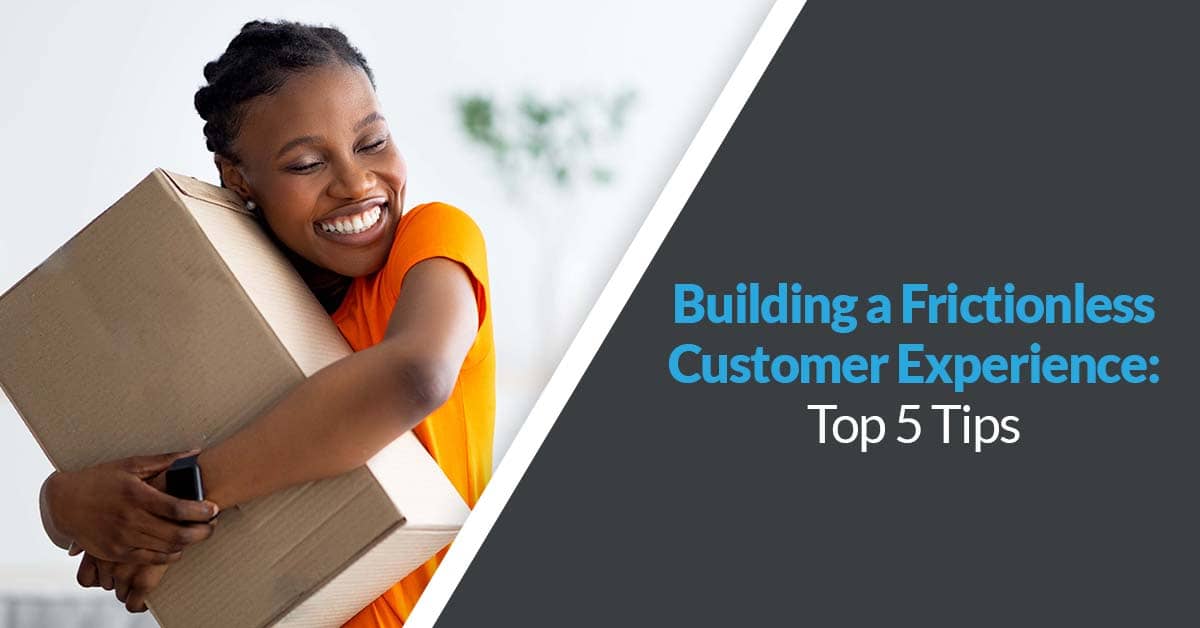Whoever Gets Closest to the Customer Wins: 5 Tips for Creating a Frictionless Customer Experience
6 Minute Read
Customers demand direct interactions with your brand. They want to buy from you directly, not go through a third-party wholesaler or distributor whose customer experience (CX) is totally different (and, in all probability, worse) than the one you provide.
Likewise, there are a number of benefits for your business in serving customers directly. In addition to forging positive relationships with new and returning customers, this approach allows you to “cut out the middleman.” A direct-to-consumer (D2C) model can save you time (the sales cycle can be shortened when customers interact with your business exclusively), money (no more splitting profits with middlemen), and hassle (sales are often lost due to poor experiences with intermediaries).
For many businesses and industries, however, moving away from the middleman can be a challenge. You may be accustomed to working with wholesalers, distributors, and other third parties. It can be difficult to depart from a business model that has proved effective for so long.
Read More: 5 Ways Small Business Owners Can Embrace Rapid Digital Change to Get Closer to Their Customers
Changing customer trends, however, may necessitate a shift away from old practices. You want to be like Netflix, not Blockbuster.
All parts of your organization may need to be adjusted for a shift to D2C. Your marketing team can be a major asset for creating the frictionless experience desired by today’s customers.

What Is a Frictionless Customer Experience?
A CX is considered frictionless when the process of buying a product or signing up for a service has minimal interruptions and obstacles. Some of this involves simple steps like minimizing the number of form fields a customer has to complete. On a grand scale, it may involve steps such as eliminating the gap between the company’s supply and the customer’s demand.
We see this with Tesla. Instead of requiring customers to come to a dealership and find a car they like, Tesla will manufacture a vehicle to the customer’s specifications. This dramatic D2C experience removes a common source of friction in the car buying process—the dealership—and bridges the gap to serve the consumer as directly as possible.
In addition to streamlining the buyer’s journey, a frictionless customer experience enables your business to track the customer’s behavior and understand their needs and goals better. This typically consists of an exchange of digital information, as well as direct contact with the customer via channels such as social media, chatbots, email, etc. For example, Amazon provides a robust frictionless customer experience through the ease of searching for products, adding items to the cart, going away and coming back to a purchase, etc.

How Marketing Can Help You Provide a Frictionless Customer Experience
The appeal of a frictionless customer experience is easy to understand. Instead of going to a third-party retailer (brick and mortar or digital) to buy a product they want, customers can deal directly with your business. A positive experience can make them customers for life.
However, frictionless customer experiences don’t happen by accident. Getting closer to customers is at the heart of marketing. The most important steps you can take to start creating a frictionless customer experience for your business include:
1. Gathering First-Party Data
First-party data is customer information collected by businesses directly. It generally consists of details gathered via online form submissions, emails, etc.
Due to privacy and security concerns, consumers are becoming more and more selective about which brands they share their data with. By positioning yourself as a trustworthy brand, you can earn first-party data and use it to drive genuine connections with your customers.
Read More: How to Collect First-Party Data
Lifelong relationships with customers are essential for personalized marketing and advertising. You need customers to be willing to share their information with you so you can market to them effectively. Once customers have entrusted their information to you, you can devise a frictionless experience across multiple touchpoints.
2. Improving Availability
Digital marketing presents countless opportunities for maintaining consistent communication with your customers. SMS/text messaging, email campaigns, and social media aren’t just tools for making connections and sending promotions. They can all be used to field customer complaints and questions.
Customers have become accustomed to 24/7 access to their favorite brands. Delivering a frictionless customer experience means making yourself available to help customers, even if the request comes outside of your normal hours.
Whether you hire additional employees, work with a third party to handle after-hours inquiries, and/or invest in AI solutions, your business needs to be available. An unanswered question or a bad experience can cost you a customer.
3. Refining Conversion Points
A conversion point is any stage in the sales cycle where the customer has the opportunity to take an action that aligns with your business goals. Conversion points that nudge consumers toward making a purchase are likely the most important.
Prominent, easy-to-use conversion points are key in multiple areas of marketing. From website design to paid ads, all aspects of your marketing should make the process of converting as simple as possible. Look at the language you use, make sure the language effectively communicates the process, and track consumer actions on digital platforms so you can identify and eliminate possible sources of friction.
4. Continuing Relationships with Customers Cross-Platform
One of the fundamental steps of any marketing campaign is understanding where your customers are and how they communicate. If your customers are most active on Facebook Messenger, your business needs to be active on Facebook. If they prefer text over phone calls or emails, you need to be active on SMS.
You will likely have customers active on a number of different platforms. Getting close to the customer and providing a frictionless experience requires you to invest the necessary time, effort, and energy to ensure that you are using the platform effectively and tracking results (conversion, engagement, etc.) to maintain two-way dialogues with customers across multiple marketing channels.
5. Optimizing Your Customer Service
Creating a frictionless customer experience may require making changes both large and small. Your business needs to take into account marketing, operations, and the overall brand identity you’re trying to convey.
Small changes—like investing in reliable chatbots, training to avoid long hold times, or employees to handle inquiries outside of regular business hours—can make a big difference. Other types of changes may prove to be much more challenging for organizations and industries whose customary way of doing things has been turned on its head. We’re still seeing cab companies frantically trying to measure up to the expectations customers have after using Uber, Lyft, and other rideshare apps.
Read More: 5 Tips for Your Business to Minimize Bad Customer Experiences

Start Getting Closer to Your Customers
Consumers know what they want. The digital landscape enables them to get what they want when they want it.
To meet these expectations, your business needs to take steps to get closer to the customer. This requires being responsive to consumers’ needs, simplifying the conversion process, and being attuned to customers’ behavior and attitudes toward your business across multiple platforms.
Digital marketing experts at Twelve Three Media can assist with all aspects of removing friction from the customer experience and drive more leads and sales. From developing your brand identity to building a best-in-class website to optimizing conversions, our team is an essential partner in helping your business thrive.
Take your marketing to the next level: Contact Twelve Three Media today!
NOTE: A version of this article was originally published on Entrepreneur.
